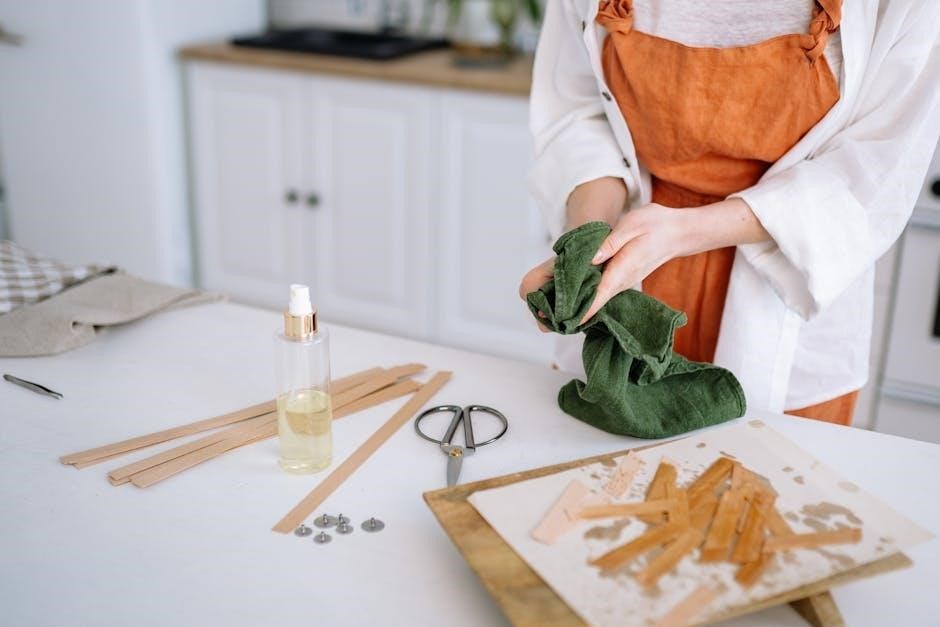Welcome to our comprehensive guide on FFXI Cloth Crafting. Discover the essentials of creating fabrics, from basic clothing to advanced magical armor. Learn skill mastery, material efficiency, and profitable crafting strategies to excel in this versatile craft.
Overview of Clothcraft in Final Fantasy XI
Clothcraft is a versatile crafting skill in Final Fantasy XI that involves creating fabrics and items essential for both practical and magical purposes. From basic materials like Grass Cloth to rare ones such as Cashmere and Velvet, players can craft clothing, armor, and furnishings. The craft progresses through various stages, requiring specific threads and crystals. Sub-crafts like Alchemy and Leathercraft enhance its utility, while guild challenges test mastery at key skill levels. Clothcraft is indispensable for equipping magic-wielding classes with lightweight armor and capes, making it a cornerstone of FFXI’s crafting system. With efficient strategies, players can master this skill, unlocking rare recipes and maximizing profitability in the game’s economy.

Importance of Clothcraft for Armor and Furnishings
Clothcraft plays a pivotal role in equipping adventurers with essential gear and enhancing their in-game experience. It specializes in crafting lightweight armor and capes, which are vital for magic-wielding classes like mages and healers. Additionally, Clothcraft produces furnishings that personalize player homes and airships, adding aesthetic and functional value. The craft’s versatility extends to creating fletchings for ammunition, further supporting ranged combat classes. By mastering Clothcraft, players can craft rare and high-end items, such as Cashmere and Velvet fabrics, which are highly sought after for their superior quality and durability. This skill is not only crucial for personal advancement but also contributes significantly to the game’s economy and community needs.
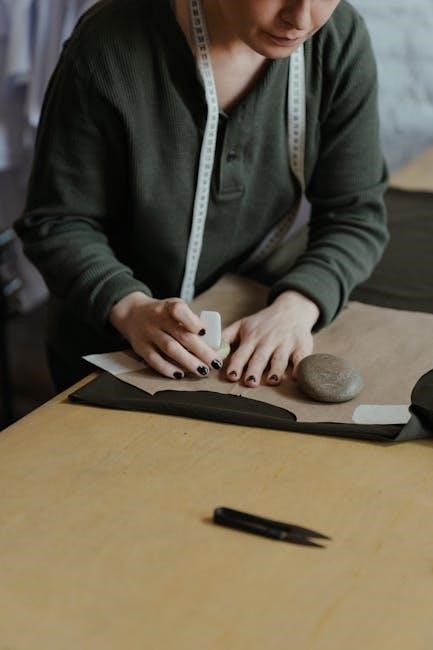
Crafting Basics
Master the fundamentals of Clothcraft with essential tools like the loom and materials such as threads, crystals, and fabrics. Elevate your crafting efficiency and skill levels effectively.
Tools and Materials Needed for Clothcraft
Clothcraft requires a loom and spinning wheel as primary tools. Essential materials include various threads, crystals, and fabrics like Grass Cloth, Cotton, and Linen. Optional items like Kitron Macarons can boost synthesis success rates. High-quality materials such as Silk and Cashmere are used for advanced recipes, while rare cloths are obtained from challenging monsters. Proper material selection ensures efficient crafting and skill progression. Always stockpile key items to maintain workflow and minimize costs. Understanding material quality and tool maintenance is crucial for mastering Clothcraft techniques and producing exceptional items.
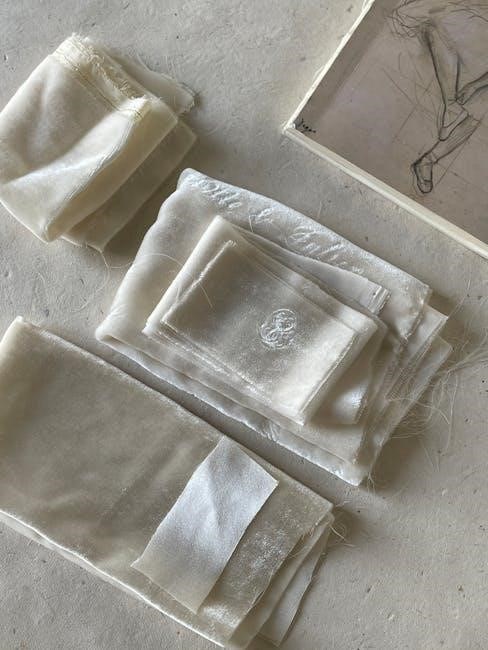
Understanding Skill Levels and Guild Requirements
Clothcraft skill levels determine your ability to craft advanced items. Every ten skill levels, you must complete a guild assessment by crafting specific items. These checkpoints occur at skill levels 8, 28, 48, and so on. The guild master, Ponono, oversees these evaluations. Skill progression unlocks access to higher-tier recipes and materials. Understanding guild requirements is crucial for advancing efficiently. Proper preparation and material management are key to meeting these challenges. Skill levels also influence synthesis success rates and HQ item production. Mastery of skill levels and guild expectations ensures smooth progression and expertise in Clothcraft.

Leveling Up Your Clothcraft Skill
Master the art of Clothcraft with efficient leveling strategies, maximizing profitability, and achieving skill mastery. From basics to advanced techniques, this guide ensures your crafting journey is seamless and rewarding.
Level 1-10: Beginner Recipes and Strategies
Starting your Clothcraft journey, focus on basic recipes like Grass Thread and Grass Cloth. These materials are inexpensive and readily available. Use a Wind Crystal for higher success rates and minimal material waste. Craft Grass Thread (1 Grass Cloth + 1 Wind Crystal) and then synthesize it into Grass Cloth (2 Grass Threads). This method ensures steady skill progression. Farm Grass Cloth from guild vendors or purchase it at low cost. Avoid expensive materials early on to save gil. Once you reach skill level 8, speak with Ponono to unlock intermediate recipes. Keep practicing these simple syntheses to build a strong foundation for advanced crafting.
Level 11-30: Intermediate Recipes and Efficiency
Level 11-30: Intermediate Recipes and Strategies
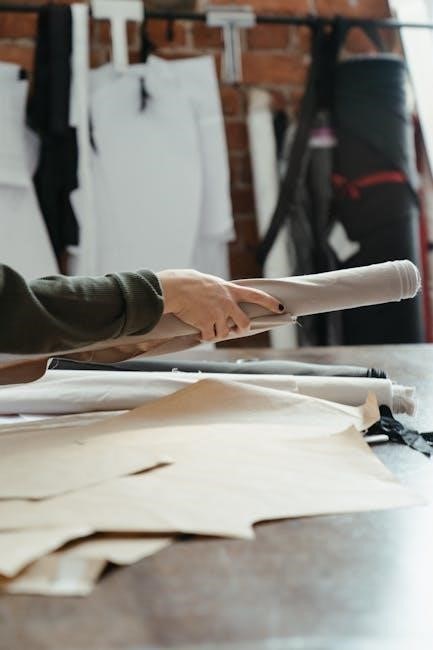
At levels 11-30, focus on refining your skills with Cotton and Linen threads. These materials provide better efficiency and progression. Start with Cotton Thread (1 Cotton Cloth + 1 Earth Crystal) and synthesize it into Cotton Cloth (2 Cotton Threads). For Linen, use Linen Thread (1 Linen Cloth + 1 Wind Crystal) and craft Linen Cloth (2 Linen Threads). These recipes offer steady skill gains and are cost-effective. Stock up on materials by purchasing from NPCs or farming. Avoid over-crafting expensive items early on. Instead, stick to these intermediate recipes to maximize efficiency. This phase is crucial for building a strong foundation before advancing to higher-level crafts.
Level 31-60: Advanced Techniques for Skill Mastery
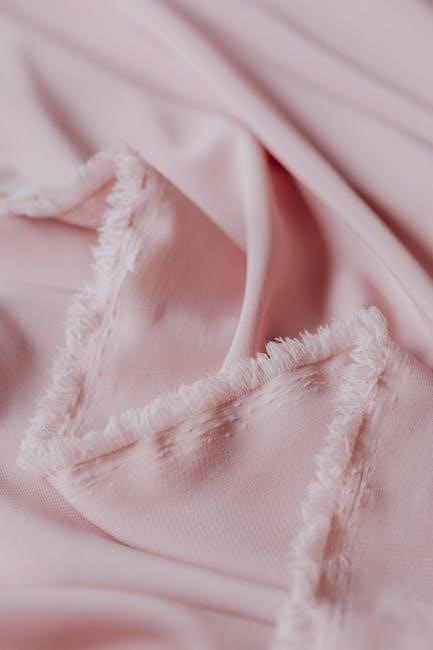
Reaching level 31-60 requires mastery of advanced materials like Silk, Velvet, and Cashmere. Transition to crafting higher-tier fabrics such as Karakul Thread (level 57) and Karakul Cloth (level 59) for significant skill gains. Prioritize efficiency by minimizing material waste and optimizing synthesis strategies. High-Quality (HQ) synthesis becomes crucial here, as it enhances both skill progression and item quality. Experiment with sub-crafts like Alchemy for dyes or Leathercraft for composite materials. Farming rare materials, such as Yagudo Feathers, can also boost efficiency. This phase demands precision and resource management to achieve consistent skill-ups. Mastering these techniques ensures a smooth transition to expert-level crafting and unlocks access to rare and high-end recipes.
Materials and Resources
Clothcraft relies on diverse materials, from basic threads to rare fabrics like Silk and Cashmere. Efficiently sourcing and managing these resources is key to successful crafting.
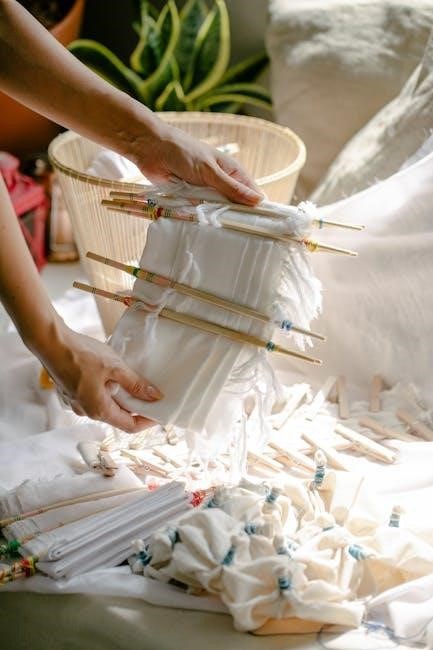
Types of Cloth and Threads in FFXI
Clothcraft in FFXI utilizes a variety of materials, ranging from basic Grass Cloth to rare Cashmere. Threads are crafted from these cloths, with Grass Thread being the most accessible. Cotton, Linen, and Wool threads follow, offering higher quality and durability. Silk and Cashmere threads are advanced, used for premium items. Velvet, a blended material, sits between Wool and Silk in quality. Rare cloths, such as those dropped by challenging monsters, are highly sought after for exclusive recipes. Understanding these materials is crucial for crafting armor, furnishings, and other essentials. Each type of cloth and thread plays a unique role in the crafting process, catering to different skill levels and item requirements.
Farming and Purchasing Materials Effectively
Efficient material acquisition is vital for Clothcraft. Farming specific monsters or gathering materials in designated zones can yield valuable resources. For example, elementals in Ru’Aun Gardens can be farmed for clusters, which are essential for advanced synthesis. Purchasing materials from vendors or the Auction House can also be cost-effective. Comparing prices and timing purchases during low-demand periods can save gil. Investing in sub-crafts like Alchemy or Leathercraft can provide additional material sources. Prioritizing high-demand materials and avoiding overstocking ensures efficient use of resources. Balancing farming and purchasing strategies maximizes profitability and reduces expenses, making Clothcraft more sustainable for both casual and dedicated crafters. Understanding market trends and player demand is key to optimizing material acquisition.
Optimizing Material Use for Maximum Efficiency
Optimizing material use is crucial for efficient Clothcrafting. Plan recipes in advance to minimize waste and maximize output. Use sub-crafts like Alchemy to create essential materials, reducing reliance on farming or purchasing. Prioritize crafting items with high market demand to ensure profitability. Store excess materials in inventory or bazaars for future use. Avoid overstocking perishable items and focus on crafting in bulk during periods of high demand. Utilize synthesis support items like Kitron Macarons to enhance success rates and reduce material loss. By streamlining material usage, crafters can reduce costs, improve efficiency, and maintain a steady supply of resources for advanced recipes and high-quality synthesis. This approach ensures sustainable progress in Clothcraft without unnecessary expenses.
Advanced Clothcraft Techniques
Master advanced Clothcraft techniques, including high-quality synthesis, sub-craft integration, and rare recipe mastery for exceptional fabric creations in Final Fantasy XI.
High-Quality (HQ) Synthesis Strategies
Achieving high-quality (HQ) synthesis in Clothcraft requires precise material selection, optimal sub-craft support, and mastery of timing. HQ items often demand rare materials like Karakul Thread or Cashmere Cloth. Using sub-crafts such as Alchemy for enhancing materials can significantly boost success rates. For instance, synthesizing Karakul Cloth (59) or Velvet (50) requires careful planning and high-quality threads. Additionally, utilizing food like Kitron Macarons can enhance your crafting skills temporarily, increasing HQ chances. Farming elemental clusters or specific monster drops ensures a steady supply of essential materials. By combining these strategies, crafters can produce exceptional HQ fabrics, which are highly sought after for crafting advanced armor and furnishings in Final Fantasy XI.
Using Sub-Crafts Like Alchemy and Leathercraft
Sub-crafts like Alchemy and Leathercraft are essential for enhancing your Clothcraft skills. Alchemy allows the creation of potent dyes and additives, improving material quality and HQ synthesis success rates. Leathercraft provides durable threads and fabrics, which can be incorporated into advanced cloth recipes. For example, combining alchemically enhanced dyes with high-quality leather threads can yield exceptional results. Additionally, sub-crafts like Smithing can supply rare metal-based materials for specialized fabric crafting. Investing time in these auxiliary skills not only broadens your crafting options but also increases efficiency and profitability. By mastering sub-crafts, you can create unique and high-demand items, setting your Clothcraft apart in the world of FFXI.
Mastery of Rare and High-End Cloth Recipes
Mastery of rare and high-end cloth recipes is a pinnacle of Clothcraft in FFXI. These exclusive recipes require rare materials like Cashmere, Velvet, and Rainbow Cloth, often obtained from challenging monsters or expensive vendors. Crafting items like Karakul Cloth or high-quality SilkCloth demands precision and high skill levels. Success in HQ synthesis is crucial for these recipes, as failure can be costly. Advanced techniques, such as using optimal sub-craft bonuses and timing synthesis attempts during favorable in-game conditions, are essential. Rare cloths are highly sought after for crafting elite armor and furnishings, making them profitable for crafters. Achieving mastery in this area not only boosts your reputation but also unlocks access to unique, high-demand items in the game.
Profitability and market demand drive the success of Clothcraft. Keep costs low, focus on high-quality items, and stay updated with community guides for continuous improvement and mastery.
Profitability and Market Demand for Clothcrafted Items
Clothcrafted items, such as lightweight armor and capes, are in high demand among magic-wielding classes in FFXI. Crafting high-quality (HQ) items increases profitability, as they often sell for premium prices. Focus on materials like Grass Cloth and Cotton for early-tier crafting, as they are cost-effective and widely used. Rare cloths like Silk and Cashmere yield high-value products but require significant investment. Sub-crafts like Alchemy can enhance profitability by providing essential components. Stay attuned to market trends, as demand fluctuates based on server population and player needs. Efficient material use and strategic synthesis planning are key to maximizing returns. Balancing quality and cost ensures long-term success in the competitive crafting economy.
Community Resources and Guides for Continued Improvement
The FFXI community offers extensive resources to help crafters refine their Clothcraft skills. Detailed guides like Ctownwoody’s 0-60 Clothcraft Guide and Xarchangel’s Clothcrafting strategies provide step-by-step instructions for efficient leveling and material optimization. Online forums, such as the official FFXI subreddit and crafting-focused Discord servers, host active discussions where experienced players share tips and recipes. YouTube tutorials and video guides, such as Vysalas’ crafting series, demonstrate advanced techniques and synthesis strategies. Additionally, community-created tools, like crafting calculators and market trackers, help players plan recipes and maximize profitability. Engaging with these resources ensures crafters stay updated on best practices and continue improving their skills in the ever-evolving world of FFXI Clothcraft.
